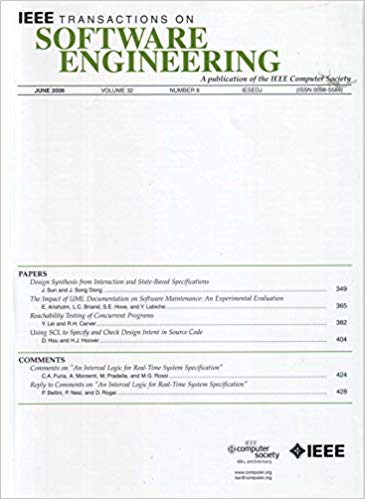cgp调优:针对代码漏洞检测的结构感知软提示调优
IF 5.6
1区 计算机科学
Q1 COMPUTER SCIENCE, SOFTWARE ENGINEERING
引用次数: 0
摘要
大型语言模型(llm)已被提议作为检测软件漏洞的强大工具,其中特定于任务的微调通常用于向llm提供特定于漏洞的知识。然而,现有的微调技术通常将源代码视为纯文本,从而丢失了代码中固有的基于图的结构信息。图形增强的软提示调优通过将结构信息转换为LLM可以理解的上下文线索来解决这个问题。然而,目前的方法主要是为一般图相关的任务而设计的,并且更多地关注邻接信息,它们在保留代码图中丰富的语义信息(例如,控制/数据流)方面存在不足。在跨模态对齐模块中捕获图形-文本交互时,它们也无法确保计算效率。本文提出了一种新的代码图增强、结构感知的漏洞检测软提示调优方法CGP-Tuning。cbp调优引入了类型感知嵌入来捕获代码图中的丰富语义信息,以及一个高效的跨模态对齐模块,该模块在合并图-文本交互的同时实现线性计算成本。它在最新的DiverseVul数据集和三个先进的开源代码法学硕士(CodeLlama, CodeGemma和Qwen2.5-Coder)上进行了评估。实验结果表明,CGP-Tuning提供了与模型无关的改进,并保持了实际的推理速度,比最佳图形增强软提示调优基线平均高出4个百分点,比未调优的零提示高出15个百分点。本文章由计算机程序翻译,如有差异,请以英文原文为准。
CGP-Tuning: Structure-Aware Soft Prompt Tuning for Code Vulnerability Detection
Large language models (LLMs) have been proposed as powerful tools for detecting software vulnerabilities, where task-specific fine-tuning is typically employed to provide vulnerability-specific knowledge to the LLMs. However, existing fine-tuning techniques often treat source code as plain text, losing the graph-based structural information inherent in code. Graph-enhanced soft prompt tuning addresses this by translating the structural information into contextual cues that the LLM can understand. However, current methods are primarily designed for general graph-related tasks and focus more on adjacency information, they fall short in preserving the rich semantic information (e.g., control/data flow) within code graphs. They also fail to ensure computational efficiency while capturing graph-text interactions in their cross-modal alignment module. This paper presents CGP-Tuning, a new code graph-enhanced, structure-aware soft prompt tuning method for vulnerability detection. CGP-Tuning introduces type-aware embeddings to capture the rich semantic information within code graphs, along with an efficient cross-modal alignment module that achieves linear computational costs while incorporating graph-text interactions. It is evaluated on the latest DiverseVul dataset and three advanced open-source code LLMs, CodeLlama, CodeGemma, and Qwen2.5-Coder. Experimental results show that CGP-Tuning delivers model-agnostic improvements and maintains practical inference speed, surpassing the best graph-enhanced soft prompt tuning baseline by an average of four percentage points and outperforming non-tuned zero-shot prompting by 15 percentage points.
求助全文
通过发布文献求助,成功后即可免费获取论文全文。
去求助
来源期刊

IEEE Transactions on Software Engineering
工程技术-工程:电子与电气
CiteScore
9.70
自引率
10.80%
发文量
724
审稿时长
6 months
期刊介绍:
IEEE Transactions on Software Engineering seeks contributions comprising well-defined theoretical results and empirical studies with potential impacts on software construction, analysis, or management. The scope of this Transactions extends from fundamental mechanisms to the development of principles and their application in specific environments. Specific topic areas include:
a) Development and maintenance methods and models: Techniques and principles for specifying, designing, and implementing software systems, encompassing notations and process models.
b) Assessment methods: Software tests, validation, reliability models, test and diagnosis procedures, software redundancy, design for error control, and measurements and evaluation of process and product aspects.
c) Software project management: Productivity factors, cost models, schedule and organizational issues, and standards.
d) Tools and environments: Specific tools, integrated tool environments, associated architectures, databases, and parallel and distributed processing issues.
e) System issues: Hardware-software trade-offs.
f) State-of-the-art surveys: Syntheses and comprehensive reviews of the historical development within specific areas of interest.
 求助内容:
求助内容: 应助结果提醒方式:
应助结果提醒方式:


